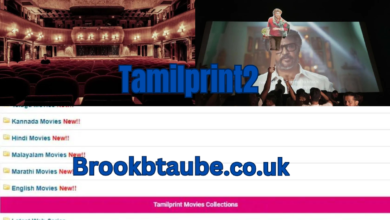TamilMV A Comprehensive Look into the World of Online Movie Piracy

In the age of digital entertainment, where streaming platforms and on-demand services are flourishing, the menace of online piracy continues to be a significant challenge. One of the infamous names in this domain is TamilMV, a website known for providing pirated copies of movies, particularly from the Tamil film industry, but also encompassing a wide range of Indian and international cinema. This article delves into the history, operations, impact, and legal battles surrounding TamilMV, shedding light on the broader issue of movie piracy in the digital era.
The Genesis of TamilMV
TamilMV emerged in the early 2010s, quickly gaining notoriety for its extensive library of pirated content. It primarily targeted the Tamil-speaking audience but soon expanded its offerings to include movies from other Indian languages such as Telugu, Malayalam, Kannada, and Hindi. The site also featured dubbed versions of international films, catering to a diverse audience base.
How TamilMV Operates
Structure and Technology
TamilMV, like many piracy websites, operates through a complex network of domains and servers. This decentralized approach helps the site evade law enforcement and anti-piracy agencies. When one domain is taken down, the operators can quickly switch to another, ensuring minimal disruption to their services.
The website employs various technologies to hide its tracks. These include the use of proxy servers, virtual private networks (VPNs), and mirror sites. Additionally, TamilMV often uses cloud storage services to host its files, making it harder for authorities to trace and shut down the source of the pirated content.
Content Acquisition and Distribution
The process of acquiring and distributing pirated movies involves several steps. Initially, a camcorder recording of a newly released film is made in a theater. These recordings, known as “cam prints,” are typically of low quality but are in high demand due to the early availability. Over time, higher-quality versions, such as HD rips from DVDs or Blu-rays, become available and replace the cam prints.
TamilMV’s operators and uploaders work in a coordinated manner to ensure a steady stream of new content. They often employ advanced video encoding techniques to compress files without significant loss of quality, making it easier for users to download and stream movies with limited bandwidth.
The Impact of TamilMV on the Film Industry
Economic Consequences
The film industry, particularly in India, suffers significant economic losses due to piracy. TamilMV’s activities contribute to this issue by providing free access to movies that would otherwise generate revenue through theater ticket sales, streaming subscriptions, and physical media purchases. According to industry estimates, the Indian film industry loses billions of dollars annually due to piracy.
Employment and Investment
Piracy also affects the livelihoods of countless individuals involved in the film industry, from actors and directors to technicians and support staff. Reduced revenue means less investment in new projects, which in turn leads to fewer job opportunities. The ripple effect of piracy can stifle creativity and innovation, as producers may be less willing to take risks on unconventional or high-budget films.
Legal and Enforcement Challenges
Anti-Piracy Laws
India has stringent laws against piracy, including the Copyright Act of 1957 and the Information Technology Act of 2000. These laws provide for severe penalties, including imprisonment and hefty fines, for those involved in piracy. However, enforcement remains a significant challenge due to the decentralized and anonymous nature of piracy networks.
Efforts to Combat Piracy
Law enforcement agencies, along with industry bodies like the Motion Picture Association of America (MPAA) and the Indian Film Producers Council (IFPC), have been actively working to combat piracy. This includes conducting raids, seizing equipment, and shutting down websites. Despite these efforts, sites like TamilMV continue to resurface, highlighting the need for more effective and coordinated global action.
The Role of Technology in Tackling Piracy
Digital Rights Management (DRM)
One of the key tools in the fight against piracy is Digital Rights Management (DRM) technology. DRM involves encrypting digital content to prevent unauthorized access and copying. While DRM has been somewhat effective, pirates often find ways to circumvent these protections, necessitating continuous advancements in DRM technologies.
Blockchain and Forensic Watermarking
Emerging technologies such as blockchain and forensic watermarking offer new avenues for combating piracy. Blockchain can provide a secure and transparent way to track the distribution of digital content, making it easier to identify and prevent unauthorized sharing. Forensic watermarking involves embedding unique identifiers into digital content, allowing for the tracking of pirated copies back to their source.
The Ethical and Cultural Dimensions of Piracy
Public Perception
Public perception of piracy is complex. While many people understand that piracy is illegal, the convenience and cost savings of accessing pirated content often outweigh ethical considerations. This is particularly true in regions with limited access to affordable and legitimate entertainment options.
Cultural Factors
In some cultures, there is a more relaxed attitude towards intellectual property rights, and piracy is seen as a victimless crime. This cultural acceptance of piracy poses a significant challenge to anti-piracy efforts. Changing these attitudes requires a combination of public awareness campaigns and improved access to legal content.
The Future of Piracy and Legitimate Streaming Services
The Rise of Streaming Platforms
The growth of streaming platforms like Netflix, Amazon Prime Video, and Disney+ has provided consumers with convenient and affordable access to a vast library of movies and TV shows. These services have helped reduce the demand for pirated content by offering a legitimate alternative. However, the proliferation of streaming services has also led to subscription fatigue, where consumers are reluctant to pay for multiple services, potentially driving some back to piracy.
Innovation and Adaptation
The entertainment industry continues to innovate and adapt to the challenges posed by piracy. This includes exploring new distribution models, such as simultaneous theater and digital releases, and leveraging data analytics to better understand consumer preferences and combat piracy. Ultimately, the goal is to create a digital ecosystem where legal access to content is so convenient and affordable that piracy becomes an unattractive option.
Conclusion
TamilMV is a prominent example of the ongoing battle between the entertainment industry and online piracy. While the site has caused significant economic and cultural damage, it also highlights the need for continuous innovation and adaptation in the fight against piracy. By leveraging new technologies, improving access to legal content, and shifting public perceptions, the industry can hope to reduce the impact of piracy and ensure a sustainable future for creators and consumers alike.
The story of TamilMV is a microcosm of the broader challenges and opportunities in the digital age. It underscores the importance of a multifaceted approach, combining legal enforcement, technological innovation, and cultural change, to address the complex issue of online piracy. As the digital landscape continues to evolve, so too must the strategies to protect intellectual property and support the creative industries.



